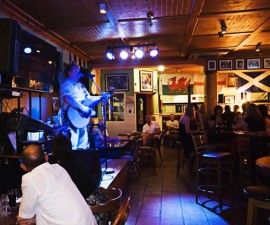There has been a settlement at Alvor, Portugal, for centuries. It has grown in recent years into a bustling tourist resort, yet Alvor has not lost its old world charm and still retains a village feel and a strong sense of history.
There are several historical attractions to be seen in Alvor, and for those with an interest in history as well as the beaches of the Algarve, there is plenty more at nearby Lagos to keep the inquisitive historian occupied.
Some thousand years ago, during Moorish rule before the Christian Reconquest, Alvor was a thriving seaport and an important landmark on the coastline of southern Portugal. Alvor Castle was constructed sometime before the 12th century although it is not known exactly when. It is however, documented in the history books as far back as 1189 when it was noted that Sancho I had captured the Muslim castle located in the town with the help of Crusaders making their way to the Holy Land. Alvor Castle changed hands twice more, first back to the Muslims and then in its reconquest by Sancho I’s son, Afonso II.
These days only one of the turrets and two sections of wall remain intact, but the castle is a point of interest for anyone with an interest in Portuguese history. Once the Algarve had returned fully to Christian rule, Alvor’s walls were rebuilt around AD1300 and Alvor was declared a town by King João II who went on to become one of Portugal’s most famous rulers. In fact King João died here in the castle in 1495, shortly after Columbus had discovered the New World and Portugal was enjoying its heyday as a nation of great explorers.
The Igreja Matriz Divino Salvador is the main ecclesiastical building that presides over the town, geographically and perhaps also culturally. The Igreja Matriz Divini Salvador is a fine example of Manueline architecture, so named after the aesthetic tastes of King Manuel of Portugal, who reigned during the early 16th century.
The church is one of the most attractive of its kind on the whole of the Algarve and is well worth a visit to admire its elaborate Manueline features. The main entrance door is a lovely semi-circular arch, typical of the Age of Discovery, while the side door is in traditional Manueline style. The main body of the church comprises three naves, four bays and a triple apse and the original supporting interior columns all remain intact.
The altar demonstrates some beautifully elaborate gilding and carving along with some 18th century features thanks to the rebuilding efforts that followed the powerful 1755 earthquake that tore down so much of the Algarve. A lifesize statue of Christ dates from this period along with some lovely features on the chancel, including a painting of the Diving Saviour by one of the Algarve’s most famous artists, Joaquim Jose Rasquinho.
There are several other smaller churches in Alvor worth a visit, in particular the Church of Mercy in the Praça da Republica, which also dates back to the 16th century.
Heading out of Alvor town centre, next to the Alvor river en route to Lagos, are the Roman ruins of Villa Abicada. Sadly the ruins are in need of some major restoration works but Villa Abicada is still well worth the visit. The ruins are of an old Roman villa that was built and inhabited sometime around the fourth century, subsisting on the sea and river products. The scenery around the villa is delightful, tranquil, unexplored and undeveloped.
Nearby Lagos offers plenty of historical interest and is well worth a visit. The Lagos city walls that remain intact to this day, surrounding Lagos Old Town, provide a real feel for the history and ancient culture of this important coastal location.
The Lagos city walls date back to the 16th century and are adorned with twin watchtowers and the large St Gonçalo Gate. This is a lovely place to wander amongst the greenery of the landscaped gardens, the city walls best admired from the outside rather than the built up area within.
Finish your exploration with a look in at the Governor’s Castle and the Slave Market. The Slave market dates back to the 15th century when the African slave trade was at its height, while the Governor’s Castle, close to St Gonçalo’s Gate, is a fine example of Arab construction, tempered by various rebuilding efforts over the succeeding centuries.
